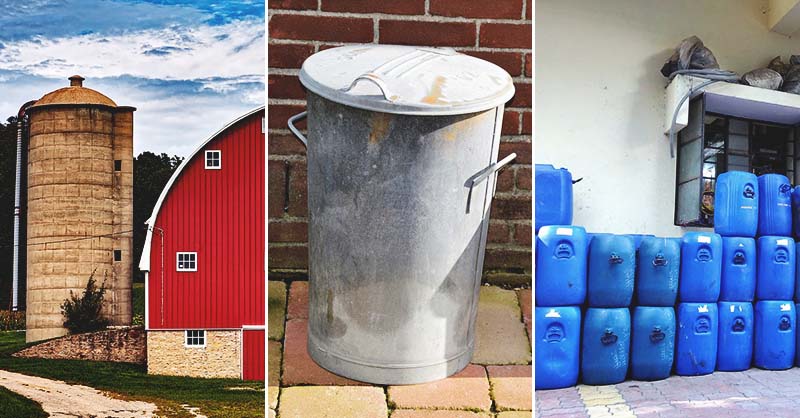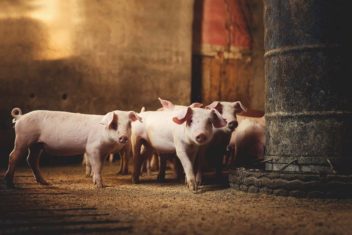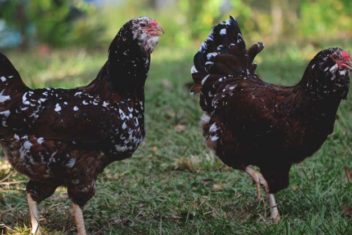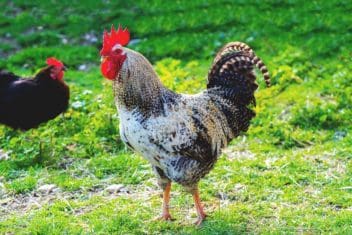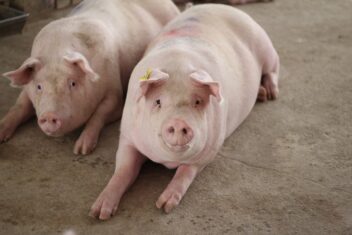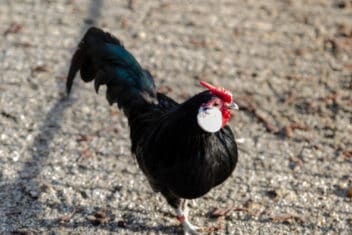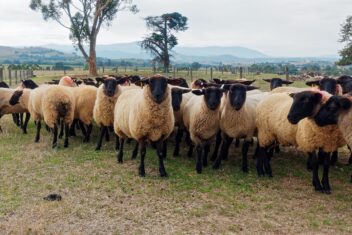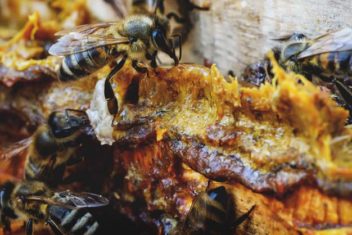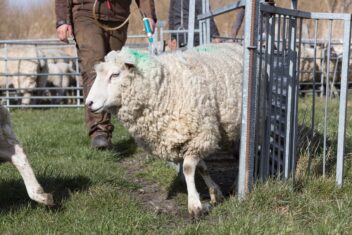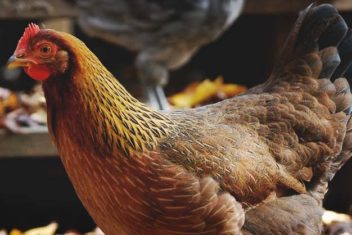Storing animal feed is a natural struggle when homesteading. You must compete with mice, rats, squirrels, and any other pest which wants your feed to go in their bellies.
How do you combat nature while still trying to feed your animals? It requires a bit of creativity on your part, but I assure you, it can be done.
I’m not sure any storage method is ever 100%, but you can certainly find a way to store your livestock’s feed without losing large quantities to unwanted visitors.
Here are a few ways to store feed safely:
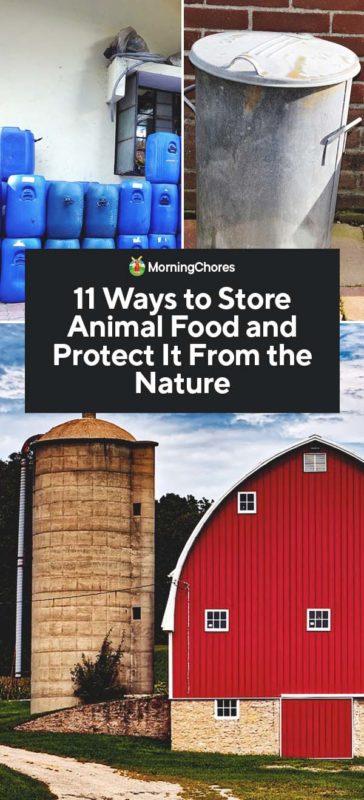
1. Proper Storage
If you want to reduce feed loss, you must first make sure you’re storing the feed properly. The feed shouldn’t be stored where the sunlight can get to it. This will reduce the quality of the feed.
It should be stored in a shaded or fully covered area with proper ventilation. Make sure you store your bins on pallets or stacked bricks to give water a way to drain if it makes its way into your storage area.
This will reduce water damage to your feed. Not losing feed could be as simple as changing your current location to make it harder for pests to get to it.
2. Metal Trash Cans
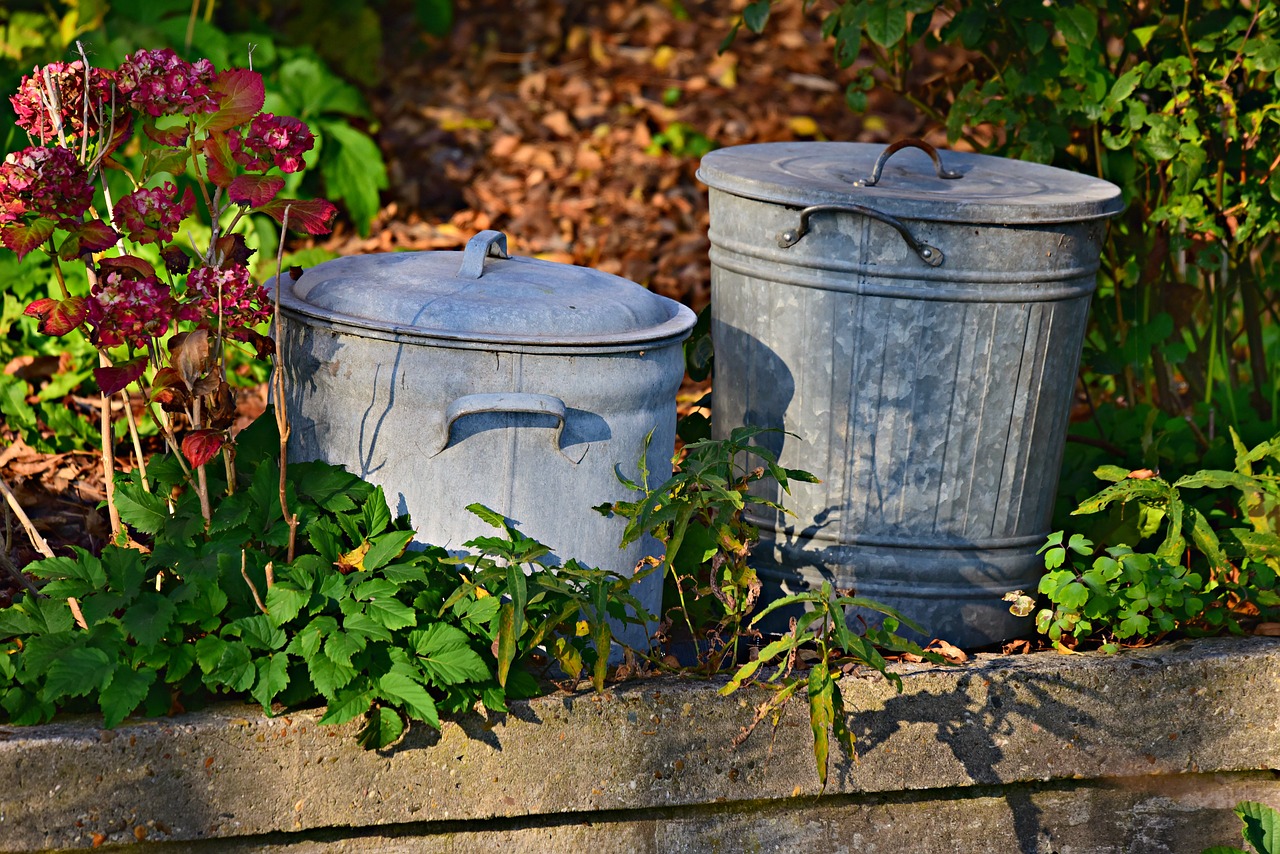
Let’s say your storage spaces are limited or worse, you can’t keep squirrels or mice out of your garage. Now, what should you do?
You should invest in metal trash cans with secure lids. I’m going to suggest some plastic options further down in the post.
However, if you can afford metal cans, they’re the best. Mice and squirrels will have a difficult time chewing through metal. By keeping the lid secure, you’ll greatly reduce their success rate when attempting to break into your feed.
3. Plastic Drums
If you don’t have the funds for a metal trash can, consider purchasing large heavy-duty 55-gallon plastic drums with tight-fitting lids.
It’s still possible for the pests to chew through this plastic, but it’ll take them a while because of how heavy-duty they are.
By storing the feed in a garage or basement in these heavy-duty plastic tubs, you may be able to save your feed without paying the price for metal storage.
4. Indoors

Living on a homestead means you have mice on your land. I hate to be the bearer of bad news, but it’s a fact.
However, you may not have them in your house if your home is tightly sealed. If you have a finished basement or an area in your tightly sealed home you could store your feed in plastic containers, this would be one of the ideal ways to store feed.
If you’re bringing feed in your home, it’s a good idea to add a mouser to your house. This could be a dog or a cat with a high prey instinct because in the event a mouse finds its way inside, your mouse detective will take care of the problem for you.
5. Flip Top Can
Flip-top trash cans are usually made of durable plastic. The flip-top is the drawback for most people, but you can fix the can to make it work.
Drill a hole in the can and the lid. When the lid needs to remain closed, you can run a bungee cord through the trash can and the lid to keep the two parts tied together.
When it should be opened, remove the bungee cord. This should supply enough resistance to where pests wouldn’t be able to lift the lid.
6. Silo
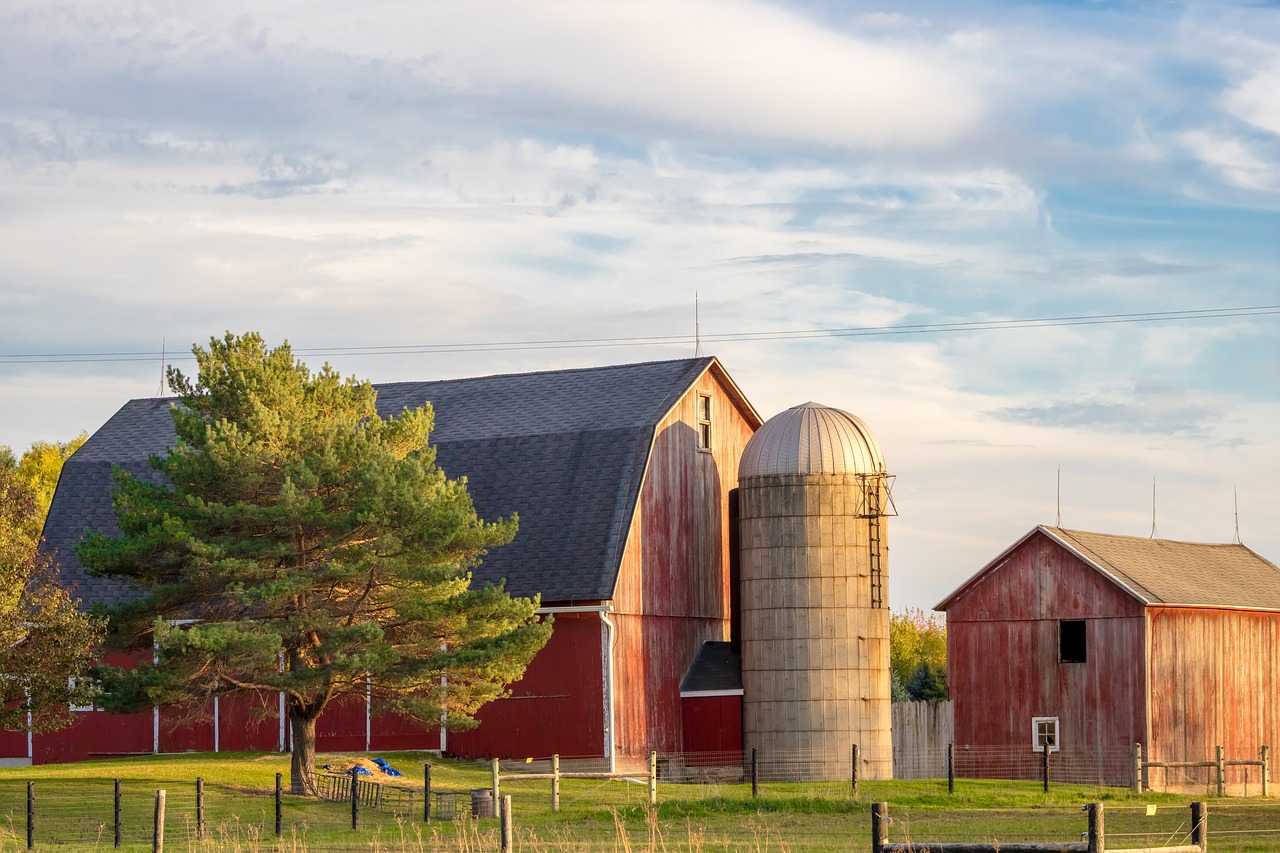
A silo is the means many farms have used for years as ways to store feed corn. This doesn’t mean mice don’t get in the silo.
However, it’s made of metal and does make life a little more difficult for the uninvited guests to get into.
If you’re looking for a way to simplify and protect your feed storage routine, investing in a silo could be an option.
7. Tool or Cargo Boxes
When my oldest son bought his secondhand truck, it came with a large toolbox. He already had a toolbox that left him with a spare.
You could sell the toolbox for extra funds, but if you need the storage more than the money, toolboxes could be beneficial ways to store feed.
This wouldn’t be an option for a larger homestead, but if you have only a small flock of birds, a metal toolbox which locks is one of the ideal ways to store feed. Mice and squirrels would have to get extremely creative to find a way inside.
8. Buy or Make a Bin
There are metal feed bins that are mainly meant to store horse feed. However, if you buy your feed in bulk, you could most likely justify this larger bin for any type of animal.
If you don’t have the money in your budget to invest in purchasing a feed bin, you could make your own.
You could build the bin out of wood and either leave it as a wooden feed storage bin, or you could cover it in metal sheets for extra durability.
9. Repurpose a Freezer
When a freezer goes out, many people will post them on social media. They want them gone and will frequently offer them free to whoever will retrieve them.
You could score one and place it in your barn or garage. Instead of plugging it in and seeing if you could bring it back to its former glory, place your feed inside of it.
If the seal on it is still good, it should do a great job at protecting your feed and should hold quite a bit of feed too.
10. Repurpose a Fridge

I’ve heard of people taking old refrigerators and placing them outdoors to be used as a solar refrigerator.
If this isn’t your thing, you still could repurpose your old refrigerator which has stopped working. It could become your new feed storage bin.
Either place it on its side or store it in an upright position. If you’re going to keep the feed bagged, you can sit bags inside the fridge. If you aren’t, the fridge will need to be laid down and filled with loose feed.
11. Don’t Toss the Ice Maker
My husband and I love a great bargain. The best bargain we’ve ever gotten is our commercial ice maker. Our church was tossing their ice machine because they said it no longer worked. They purchased a new one and needed the old one gone.
We offered to take it off their hands, purchased a replacement part, and it has been good as new ever since. It helps to have large quantities of ice on hand when we butcher our own meat.
However, if it ever quits working, we’re going to use it as a feed storage bin. It has a heavy lid and plenty of space to access the feed while keeping it protected from mice and squirrels.
This list should have given you some excellent ideas on ways to store feed without being robbed by nature.
These creatures are only doing what they know to do, but feed doesn’t come cheap. Therefore, it should be a high priority to store your feed properly to keep expenses low and our animals well cared for.
